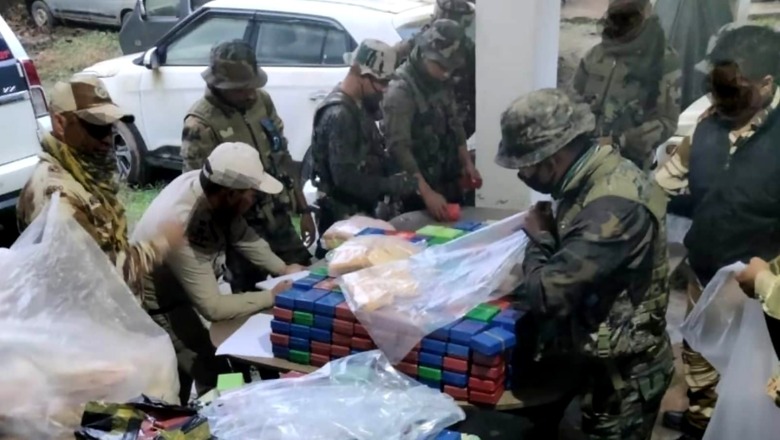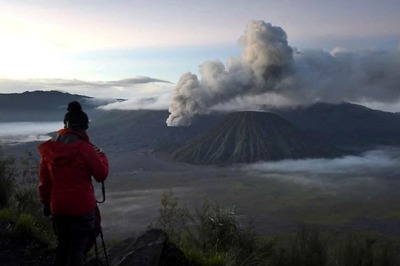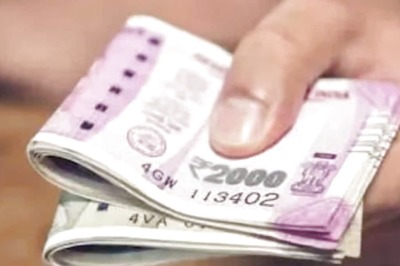
views
From 8 kg in 2018 to over 3,000 kg in 2021, India has recorded the steepest rise yet in heroin seizures in four years, with officials in the DRI and NCB saying the country is emerging as a transit point for drug trade.
The Directorate of Revenue Intelligence (DRI) is the country’s apex intelligence and enforcement agency on anti-smuggling matters, while the Narcotics Control Bureau (NCB) is tasked with cracking down on drug trafficking and the use of illegal substances under the Narcotic Drugs and Psychotropic Substances Act.
Officials in the two federal agencies told News18.com that state-level agencies had also recorded sharp rise in heroin seizures during the Covid-19 pandemic despite multiple travel restrictions.
“There has been a shocking rise in smuggling of heroin in the past four years. It seems India is emerging as the transit point for smugglers. But agencies have increased checks at all ports, which are usually the most preferred route for smugglers nowadays,” a senior DRI official responsible for handling a port in south India said on condition of anonymity.
Officials say one of the reasons behind the massive jump is the increase in cultivation of the opium crop in Afghanistan. According to a report by the United Nations Office on Drugs and Crime, a 37% increase has been recorded in the area of land used for illicit cultivation of opium poppy in Afghanistan, control of which was taken over by Taliban in August this year.
Data compiled by the DRI says that in 2018-19, the agency seized 7.98 kg heroin, which increased by close to 25% the next year when the agency seized 9.16 kg. The seizures saw a massive jump of more than 2,000% when the pandemic hit the country last year and around 202 kg heroin was seized.
Despite the initial shock, the seizure paled in comparison to the 3,000 kg consignment of heroin worth Rs 21,000 crore caught in Gujarat’s Mundra Port in September this year.
As per DRI data, from 2018 till 2021, the agency has been a jump of close around 37,400% in seizures. These figures exclude other seizures by DRI and a consignment missed by the agency in June this year, which was suspected to have close to 6,000 kg heroin. Both the September seizure and the one missed in June – alleged to be parts of the same international smuggling racket — are under probe by National Investigation Agency.
Worryingly, the seizures are said to be just 10% of the heroin drug trade.
“Be it police or central agency, the thumb rule we consider seizures to be 10% of the total availability of that item, in this case heroin. It means the total amount is much more,” Shashikant Sharma, former Punjab DGP, told News18.com.
The NCB has also noticed the upward trend in heroin seizures. According to the data compiled by the nodal agency, in 2017, police forces of various states seized 825 kg heroin, which increased the next year to 913 kg. This figure increased to 2,308 kg in 2019 and further jumped by 41% to 3,276 kg in 2020, the year of the pandemic. From 2017 to 2020, state police figures on heroin seizure saw close to 400% jump.
An NCB official estimated that heroin seizures now are at an all-time high. “We have noticed the trend and are expecting all-time high heroin seizure this year. It is because of the change in smuggling route. Now smugglers are sending thousands of kilograms of heroin in one single consignment instead of sending it through cargo wherein they used to send 1 or 2 kg. The Taliban in Afghanistan is also selling drugs at a cheaper price to western countries and supplying via India,” the official said.
Why Via India?
According to former Punjab DGP Shashikant Sharma, Iran and Iraq used to be the preferred transit points earlier but now drugs are being routed through India.
“Routes keep changing. Earlier, drug trade routes cut through Iran, Iraq etc and in some areas, consignments were also looted during transportation. Restrictions were also imposed by various countries and Pakistan doesn’t want to spoil its ties with these nations. So India is emerging as the primary transit route for heroin smuggling,” Sharma said.
He added that India is a transit point while the end destination would be in Europe or the United States. “Smugglers send their consignment using the easiest route. In the recent seizure of 3000 kg heroin (from Mundra Port), the ultimate destination was not India. It was some other country. India is their basic transit point.”
Latest Trend
According to agencies, drug trade is usually conduct through maritime routes due to the anonymity associated with them.
“India, having a large coastline with many major and minor ports, is sensitive to drug trafficking through maritime routes. Narcotic drugs such as heroin have been smuggled on boats and ships from the Gulf region in the recent past. Given Covid-19 restrictions on air travel, sea routes could be exploited by drug traffickers in the future also,” a DRI official said.
Challenges Ahead
The biggest challenge for Indian agencies is intercepting the drug consignments. Both the NCB and the DRI admit that the volume of drugs sent via sea routes makes it tough for agencies to check all consignments and they only rely on data analytics.
Even when agencies intercept a drug consignment, investigation and prosecution are mammoth tasks since the sender, recipient and the distributor involved are usually based outside India. In most cases, agencies are only able to round up low-level facilitators operating within the country.
Read all the Latest India News here


















Comments
0 comment